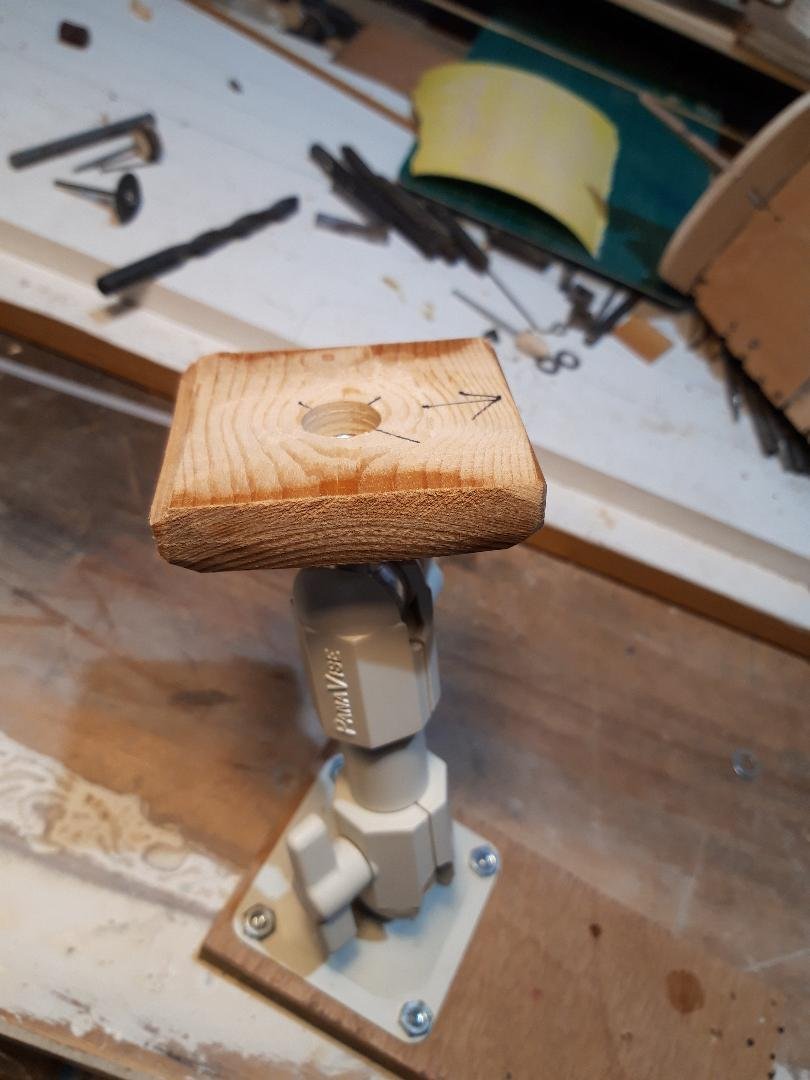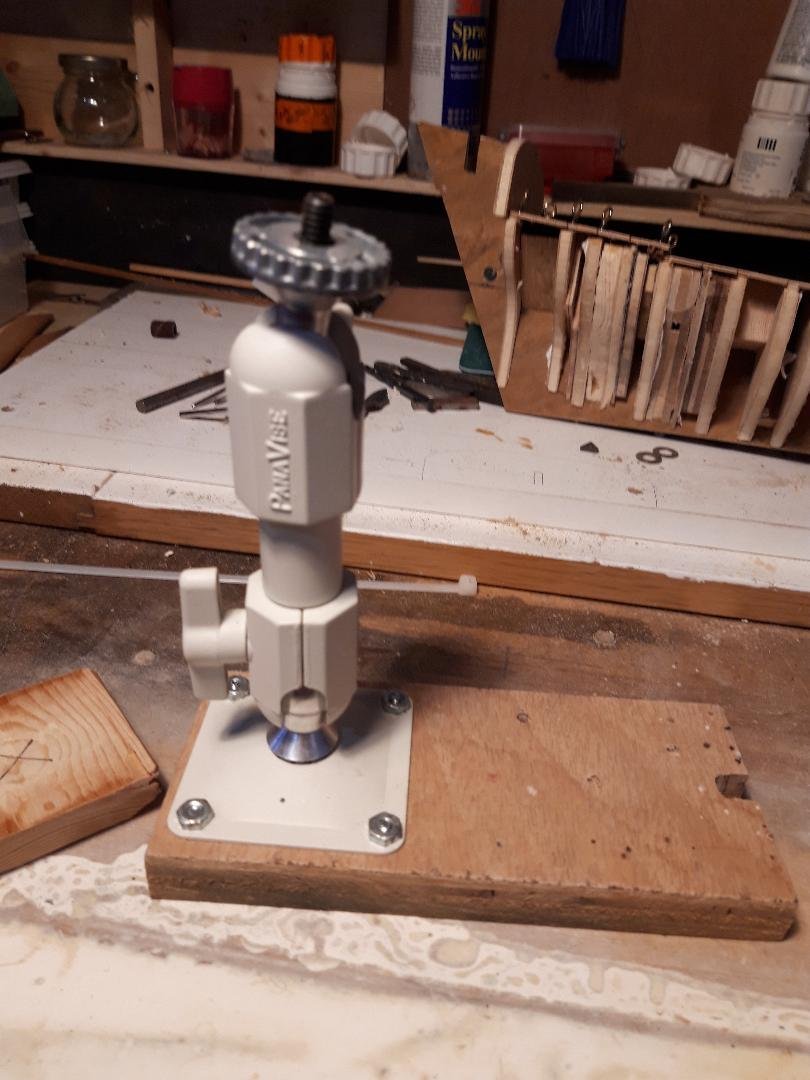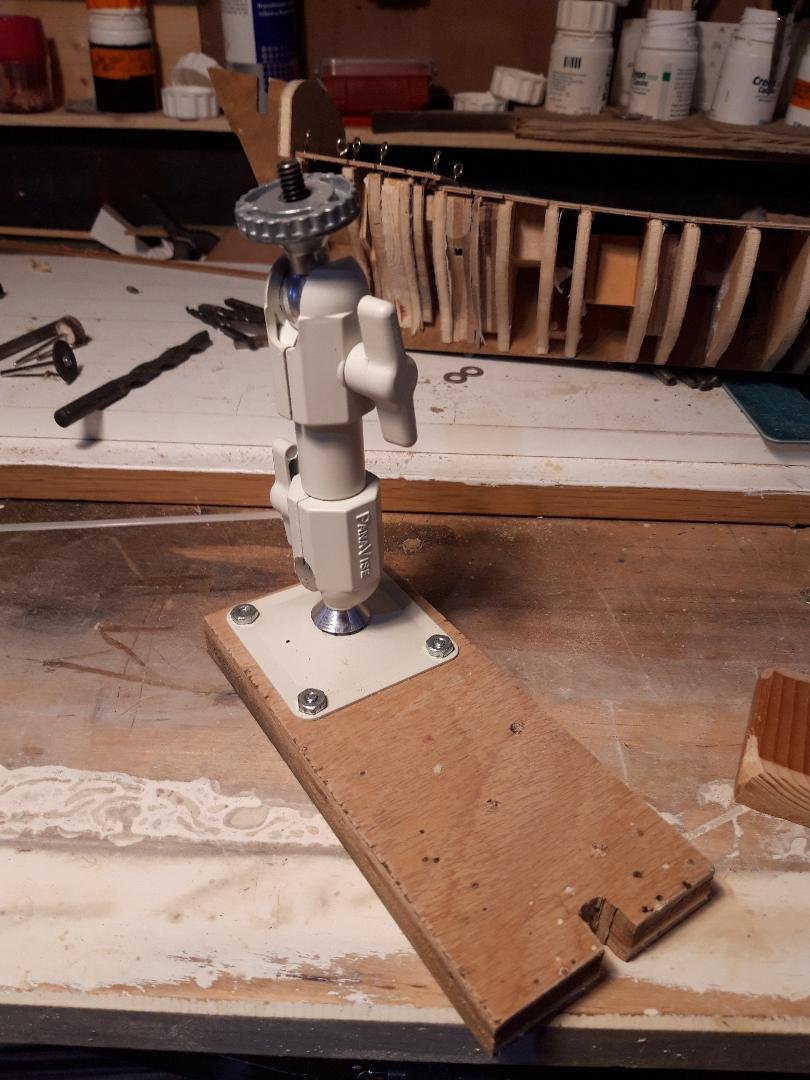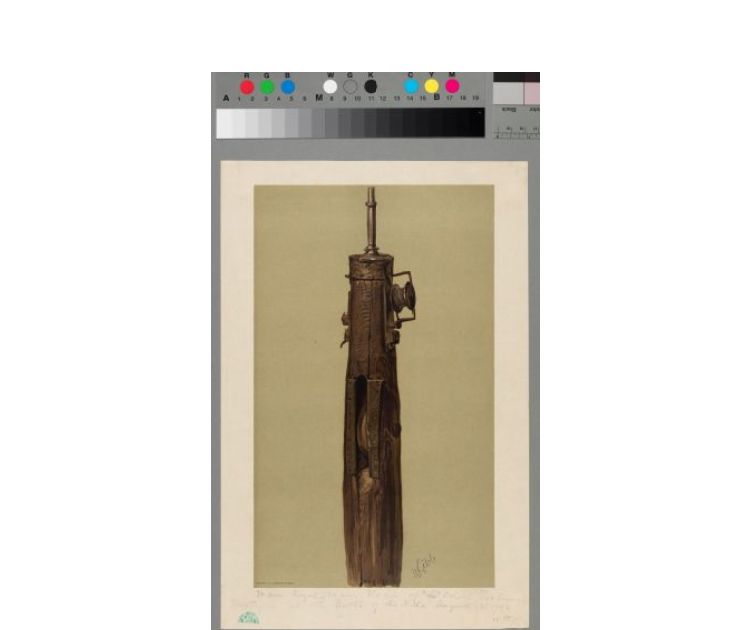-
Posts
3,046 -
Joined
-
Last visited
Content Type
Profiles
Forums
Gallery
Events
Everything posted by bruce d
-
Hello Andrew and a warm welcome to MSW from the UK. Look forward to seeing your Polaris 👍
-

Lapwing 1816 Revenue Cutter
bruce d replied to iMustBeCrazy's topic in CAD and 3D Modelling/Drafting Plans with Software
Hello Joseph, can you share the name of the officer? That should eliminate a lot of the guesswork. -
B.E., Bob, at the risk of thread drift, my solution is a cctv camera mount made by Panavise: The thread is 1/4" Whitworth and I made a couple of top-pieces for different tasks. The one in the pictures is to mount the hull upside down. HTH, Bruce EDIT: Hmmmmmm. Pics didn't work, will re-try later. 2nd EDIT: fixed
- 857 replies
-
- Sphinx
- Vanguard Models
-
(and 1 more)
Tagged with:
-
Hello Adrien, and welcome to MSW from Sussex. Since I do not know what information you already have, perhaps you can tell us what you want to know about the Penrose operation? Regards, Bruce
-

Fregat and Snau: Small Cruisers in the Danish Navy 1650-1750
bruce d replied to bruce d's topic in Nautical/Naval History
Hello Matthias, I have not had direct contact with the author but he can be contacted through Academia: (66) Jens Auer | Landesamt für Kultur und Denkmalpflege M-V - Academia.edu I have an account with Academia so it is possible the link above may not work for you, please PM me if you have a problem. He has been involved in some interesting stuff! -
Kevin, sorry to hear the news, glad you can see the way ahead. Take care.
- 1,132 replies
-
Found this in the MIT (Massachusetts Institute of Technology) Museum site. The description reads: "PLACE MADE - unknown DATE MADE - 1750 DESCRIPTION A photo-processed copy of a print depicting four figureheads of English East Indiamen. Figureheads from the top, clockwise: a man wielding a club with both hands over his head from the waist up, a bearded man with a crown holding an unidentified object with his left hand, a dragon with a forked tongue, and a falcon. The entire length of the bowspirits is not depicted; the ends are rendered with jagged edges as if they were broken off. The illustration was most likely taken from a book and was originally folded. The remnants of acid migration, or the faint designs overlapping the darker illustrations, perfectly match up and mirror many of the illustrations."
-
She was a brig and I have found that she saw at least some action. Perhaps the original poster can narrow it down a bit? Sailinganthony1812, can you tell us what you already know so we can avoid duplicating your work?
-
Thanks, I may take you up on that. 👍
-
Dennis, that's a good looking model. I especially like the planking and the amount of wood left 'bright'. For the record, Mediator had at least two owners and worked along the American east coast, the West Indies, the Mediterranean, the Bay of Biscay and finally the English Home Waters. Also, she was roughed up quite a bit when captured and re-captured and needed rerigging: I think you have quite a lot of leeway with a sail plan 😉 . Hope mine looks as good!
-
Allan, you probably have this already but here is the reconstructed sail plan:
-
Hello Dennis, I was interested to see that you are building Mediator: I am dusting off my own Mediator build at the moment after a too-long period on the shelf and will be watching to see what wise people say. Perhaps you will be posting a build log? Bruce
-
Hello James, and a warm welcome to MSW from chilly Sussex.
-
Sadly I am qualified to comment here: just three days ago I brushed a moving belt on a benchtop drill. A finger was dragged into the pulley. I still have the finger but it is very colourful. Why was the guard not covering the belt drive? Because I had been changing speeds often and got lazy. I am lucky that I have been 're-incentivised' with only minor damage.
-

1:98 HMS Victory plans
bruce d replied to Rgpracer's topic in Building, Framing, Planking and plating a ships hull and deck
Hi, nice find. May I ask how you established the model is 1/98 scale? If it is the Mantua Victory this might be useful: Mantua 911 HMS Victory Construction Plans Set | Cornwall Model Boats HTH, Bruce -
Hello Dirk and welcome to MSW. Seasons best wishes 🎅
-
Hello Shane, welcome to MSW and seasons best wishes from Sussex. 🎅
-

One of the proposed alternatives to the Panama Canal
bruce d replied to bruce d's topic in Nautical/Naval History
Ron, that echoes my original reaction when I saw the article: pure Monty Python! -

NAIAD 1797 by Bitao - 1:60
bruce d replied to Bitao's topic in - Build logs for subjects built 1751 - 1800
Great model and a great build log. Seasons best wishes, bitao. -
Matthias, I can't help with the background, just wanted to say you have found a beautiful little model. I am jealous. Seasons best wishes, Bruce
- 7 replies
-
- whaleboat
- restoration
-
(and 2 more)
Tagged with:
-
After getting a bigger bandsaw, I still have some bandsaw blades, a rip fence and a spare table top for a Scheppach HBS20. This saw is also sold under other names. It looks like this: If anybody wants this stash of spares, you are welcome to it. The blades are 1400mm length and some are brand new and unused. UK only, pay the Hermes bill (around £5) and I will send them to you or collect if you are local (Sussex). PM me if interested. Jingle Bells and Ho Ho Ho etc.
About us
Modelshipworld - Advancing Ship Modeling through Research
SSL Secured
Your security is important for us so this Website is SSL-Secured
NRG Mailing Address
Nautical Research Guild
237 South Lincoln Street
Westmont IL, 60559-1917
Model Ship World ® and the MSW logo are Registered Trademarks, and belong to the Nautical Research Guild (United States Patent and Trademark Office: No. 6,929,264 & No. 6,929,274, registered Dec. 20, 2022)
Helpful Links
About the NRG
If you enjoy building ship models that are historically accurate as well as beautiful, then The Nautical Research Guild (NRG) is just right for you.
The Guild is a non-profit educational organization whose mission is to “Advance Ship Modeling Through Research”. We provide support to our members in their efforts to raise the quality of their model ships.
The Nautical Research Guild has published our world-renowned quarterly magazine, The Nautical Research Journal, since 1955. The pages of the Journal are full of articles by accomplished ship modelers who show you how they create those exquisite details on their models, and by maritime historians who show you the correct details to build. The Journal is available in both print and digital editions. Go to the NRG web site (www.thenrg.org) to download a complimentary digital copy of the Journal. The NRG also publishes plan sets, books and compilations of back issues of the Journal and the former Ships in Scale and Model Ship Builder magazines.








